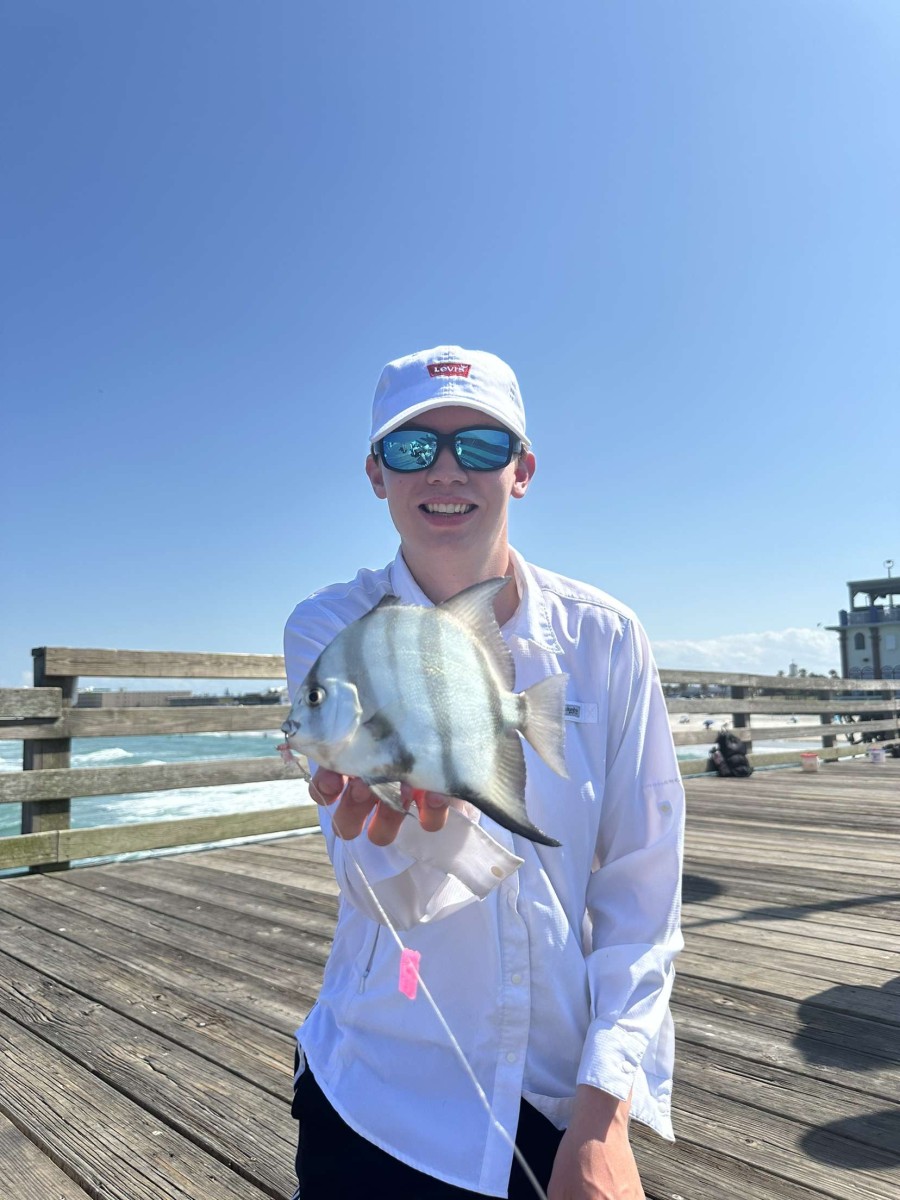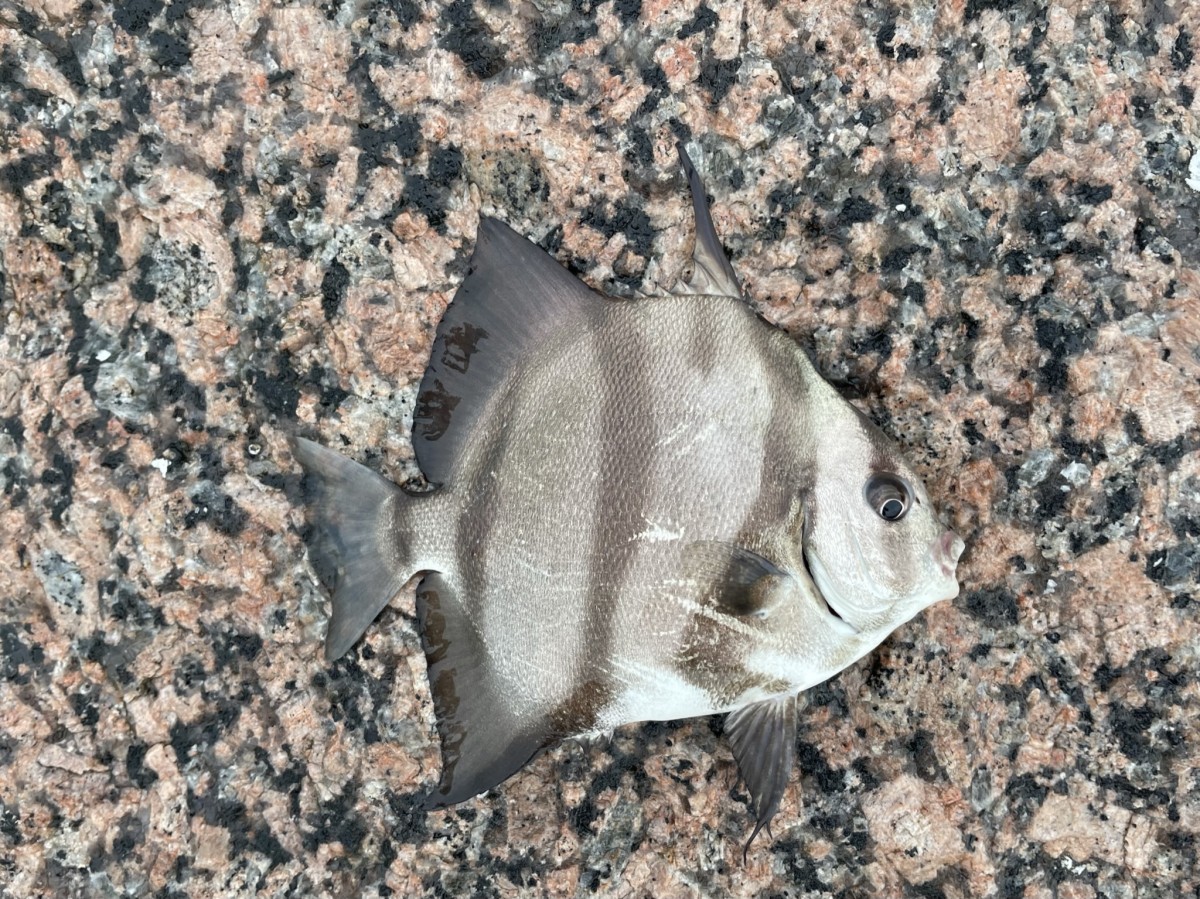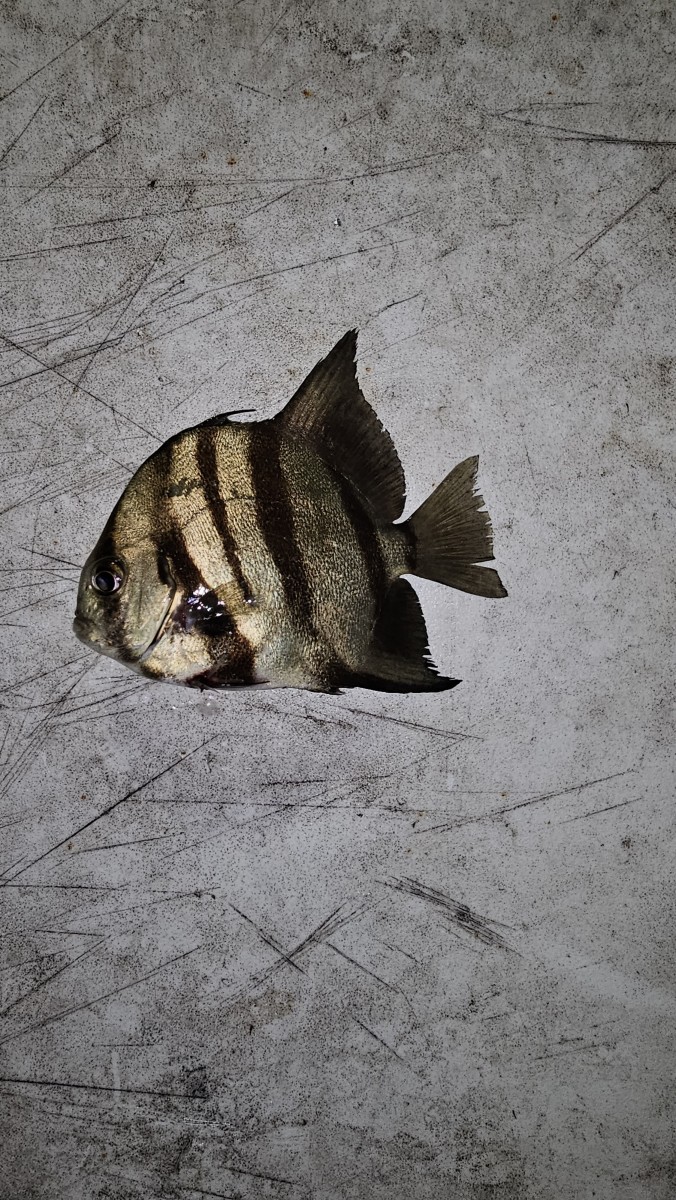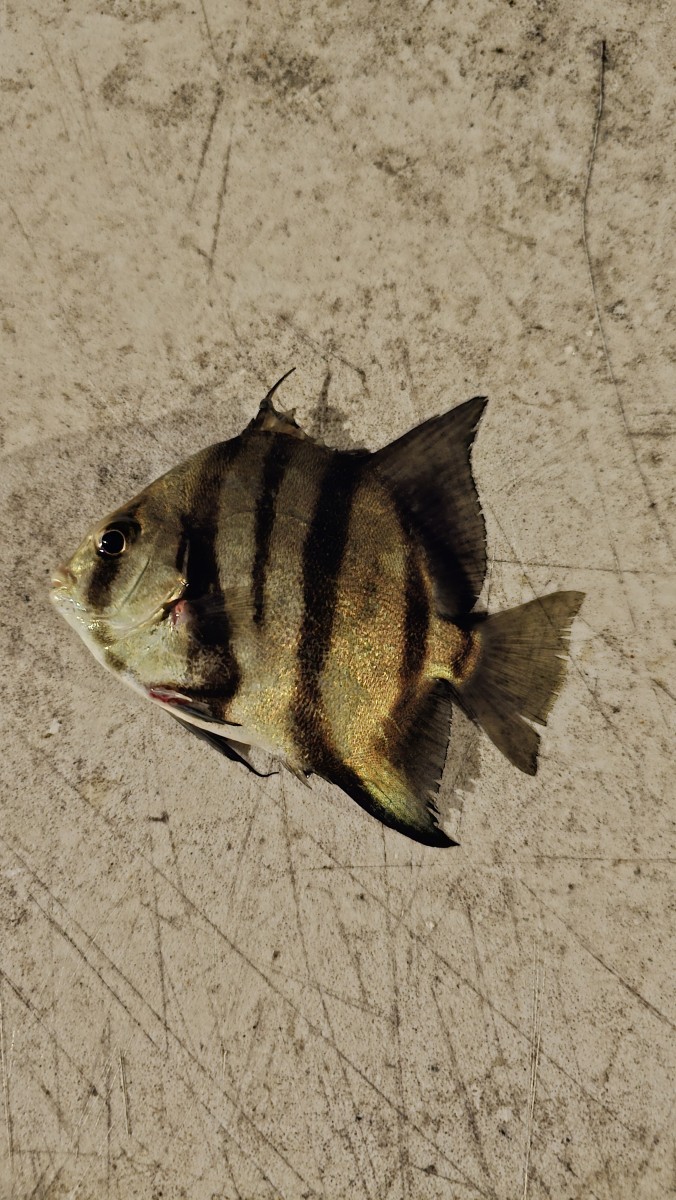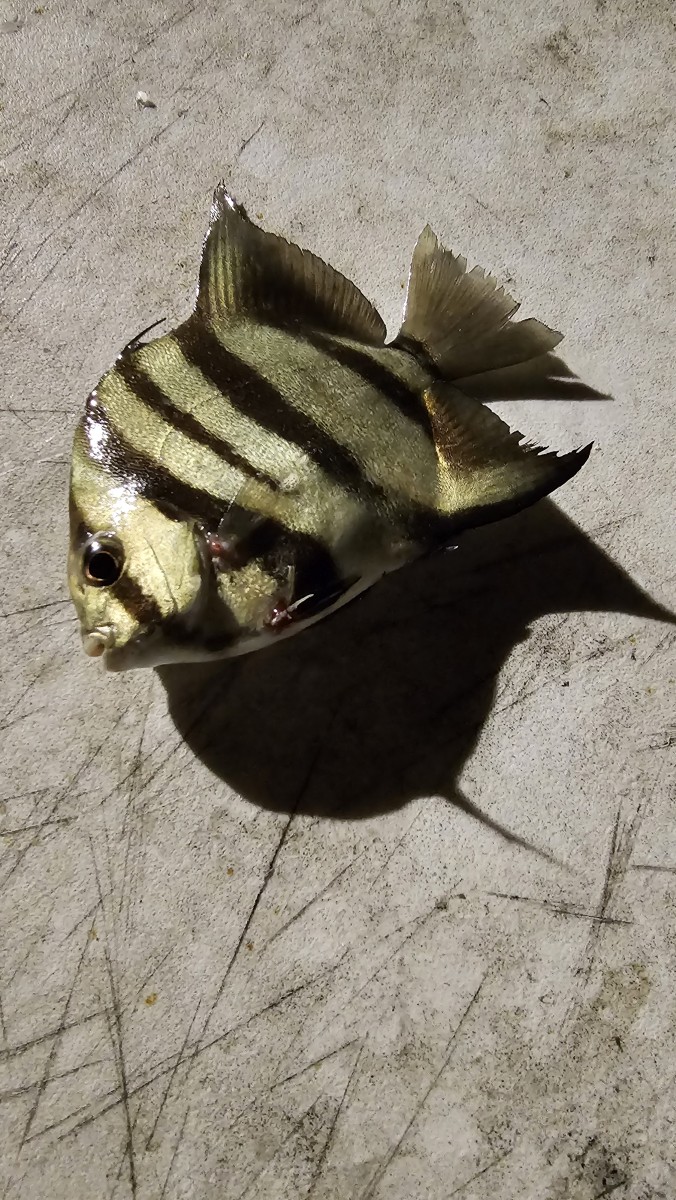Atlantic spadefish
(Chaetodipterus faber)
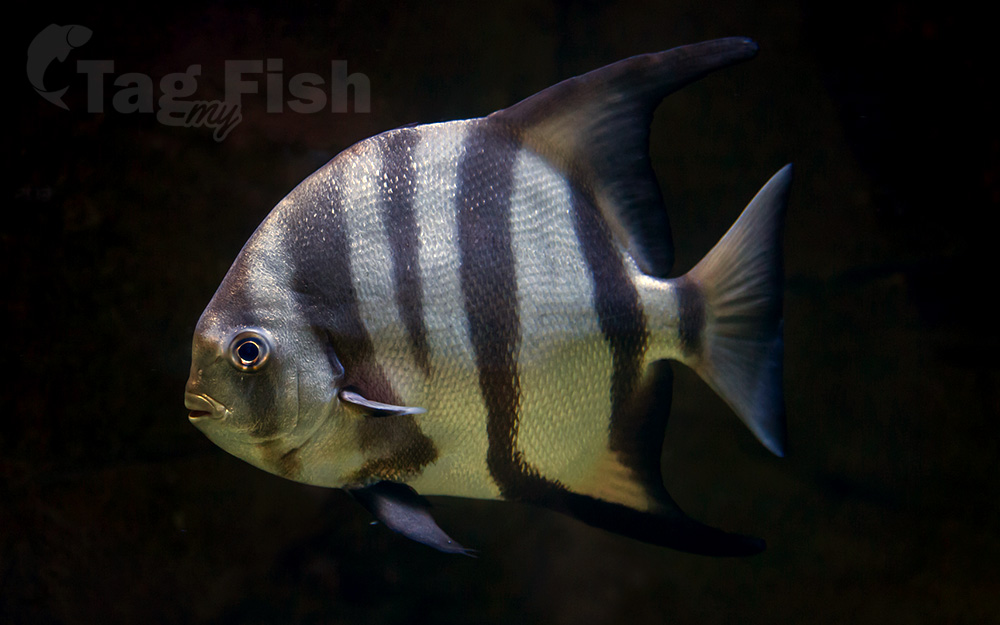
Classification
General data
The Atlantic spadefish (Chaetodipterus faber) is a species of marine fish belonging to the family Ephippidae. It is the symbol of the North Carolina Aquariums.
Chaetodipterus faber is known by numerous other colloquial names, including angelfish, white angelfish, threetailed porgy, ocean cobbler, and moonfish.
Description
The disk-shaped body is very deep and compressed, and the snout is blunt. There are 9 dorsal spines and 21-24 soft dorsal rays, and there are 3 anal spines and 17-19 anal rays. The second dorsal and anal fins of adults have long, trailing anterior lobes, giving an angelfish-like appearance.
The body is silver in color with irregular black vertical bands that fade gradually with age. There are 4-6 black vertical bands on each side, with the first running through the eye and the last running through the caudal peduncle.
The mouth is small, with the maxilla of adults ending beneath the nostrils. The teeth are small and brushlike, and there are no teeth on the roof of the mouth. The head and fins are covered with ctenoid scales.
Specimens commonly weigh from 3 to 10 pounds (1.4 to 4.5 kg), although individuals as large as 20 pounds (9.1 kg) have been recorded. Their maximum length is about 36 inches (91 cm).
Diet
Atlantic spadefish feed on small, benthic invertebrates including crustaceans, mollusks, annelids, and cnidarians. They also feed on plankton in the water column.
Distribution and habitat
The species is endemic to the western Atlantic Ocean. They are found off the coast of the southeastern United States as far north as Massachusetts, the Gulf of Mexico, and in the Caribbean. They are also found in Bermuda and the eastern coast of Brazil.
The fish inhabits marine and brackish waters typically in subtropical climates. They are common in shallow waters along coastlines with depths of 3–35 metres (9.8–114.8 ft). Juveniles commonly inhabit estuaries until maturity and adults prefer mangroves, beaches, and harbors.
